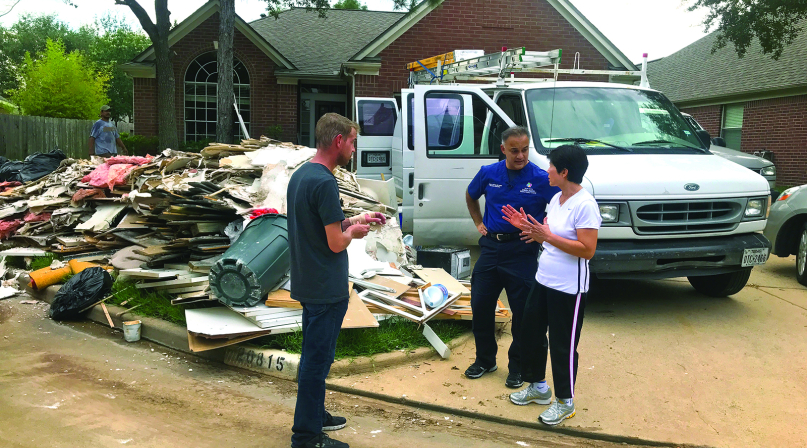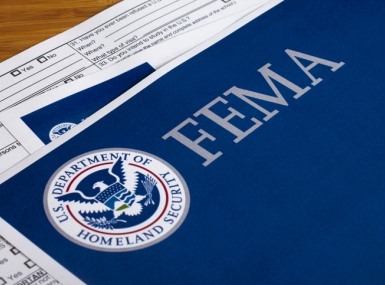Lessons learned from Hurricane Harvey
Upcoming Events
Related News

Key Takeaways
Q: What were the top priorities for the county leading up to the hurricane?
A: Ensuring the community was getting the correct public health messaging; individuals, families and their pets were adequately prepared for the duration of the storm and its intensity, and the overall health and safety of the community.
Q: What was your biggest challenge?
A: The biggest challenge for Harris County Public Health (HCPH) was the duration of the response and on-going recovery. After a hurricane, once citizens are out of immediate danger and in shelters and waters are receding, the bulk of Public Health response begins. Public health often is an invisible partner in the emergency response.
HCPH was overseeing the health and medical services in shelters, providing shelter assessments and assisting in the general response, Public Health continues to monitor for epidemics and reportable diseases, ensuring they are not proliferating as a cause of the storm. In addition, we are creating and sharing information on the possible negative health effects of storms (i.e. - mold and the health issues caused by mold, the health effects of being exposed to flood waters and the possible health effects of handling debris and cleaning up properties). This surveillance and communication work continue long after everyone else has demobilized and is back to work as normal.
Q: What other challenges did you encounter?
A: We set up an emergency animal shelter for displaced and lost pets that took in about 300 animals. We also worked with partners on the reunification process. Our environmental health team inspects about 9,000 restaurants, all those businesses needed inspections to ensure they were properly discarding food that was not safe for human consumption and their establishments were safe for the public. Our team also went throughout the community with our fleet of mobile units offering health services, water/food and cleaning supplies, pet vaccines and food, and mental health resources, in addition to many other things needed to support the community.
The enormity of this responsibility is very noticeable when you consider that many Public Health employees are themselves flooding victims, and are trying to oversee and coordinate the safe and healthy recovery of their homes and lives while they continue to work.
Q: What were you most thankful for, in preparing for the hurricane?
A: I am most thankful for the amount of preparedness planning and exercising that had been done prior to the storm both internally to HCPH and county/regional/statewide. At Harris County Public Health, we had exercised our shelter response just one month prior to Harvey, so when we deployed nurses and other medical staff (people who are less familiar with disaster response) to the medical shelter they already knew what to do and what systems needed to be put in to place. In addition, our planning and preparing at a regional level had also strengthened relationships and avenues of communication so that we were all collaborating and working together effectively for the benefit not just of our own citizens but of the region as a whole.
Q: What were your biggest challenges after the hurricane?
A: The biggest challenge after the hurricane was data acquisition. While you are in the throes of experiencing a disaster and responding to those needing immediate help, collecting data is not the first priority for many. Later, when we were trying to make decisions in planning for the recovery phase of the response, trying to do so based on available data was difficult. Harris County Public Health had been able to execute two Community Assessments for Public Health Emergency Response (CASPER), which were able to provide significant data on two distinct areas of the county. However, other data such as non-reportable health effects of the disaster (mental health, respiratory issues, skin rashes, etc.), information on how and when mold remediation was done in homes, etc. was not readily available.
Q: Can you name some ‘wishes’ you’d like to see happen?
A: I wish more of the community would understand that being prepared requires an effort of their part and our goal is to have their safety, health in mind.
I wish people would understand the incredible role public health has in preparedness. Public health is continually under resourced and stretched thin on trying to address a multitude of health concerns: measles, Ebola, Zika, flu, diabetes, etc. Then you add the layers of being responsible for protecting the health of all residents-everyone, businesses, displaced individuals, individuals undergoing distress from a disaster, and you realized that there is a strain and an undervalue of the work that public health does. So best resources and more investment in the public health system would be high on our wish list.
Q: What are the biggest lessons the county learned?
A: There are certain sectors of the community, specifically those that are culturally and linguistically isolated, that were difficult to connect with at the time of the event, possibly impeding their receipt of important and timely information. Relationships and trust need to be built with these communities before a disaster, so that clear lines of communication are available when needed.
Staff need to be fully aware of their role as a first responder and remain flexible. They need to be cross-trained and prepared for any event. This includes having a personal preparedness plan and having that communicated with their families and friends. Also, to know the expectation ahead of time that they will be needed and therefore may be unavailable to assist at home.
Disaster mental health is still very present in recovery (almost two years later). Both in the citizens of the county and staff. The storm affected the population both physically and mentally and each time a new storm is brewing, the effects are evident in all of us.
Q: What advice would you give?
A: Staff preparedness and resilience needs to go beyond having a plan and a go-kit. Any county responding to a hurricane will need adequate staff, therefore employees that may not traditionally see themselves as responders will likely be needed. It is important that ALL employees then have created plans with their families and communicated those plans with them.
It is important that the employee and their families understand that the employee will likely be unavailable at the time of the disaster and through some of the recovery, therefore they will be unable to work on any family obligations, dealings with insurance, home repair, car replacement, etc. If employees and families are aware and talk through the practical implications of a response before a disaster, their stress levels will be better and the overall agency response will benefit.
Attachments
Related News

States file lawsuit challenging FEMA’s new rules on emergency management grants
On November 4, a coalition of 12 states filed a lawsuit against the U.S. Department of Homeland Security (DHS) and the Federal Emergency Management Agency (FEMA), alleging that recent changes to key emergency management grants are unlawful and could disrupt state and local preparedness efforts.

County Countdown – Nov. 4, 2025
Every other week, NACo's County Countdown reviews top federal policy advocacy items with an eye towards counties and the intergovernmental partnership.
FEMA bill staffers offer insights into reform effort
NACo Intergovernmental Disaster Reform Task Force heard from staffers who helped shape a bill that would make dramatic changes to the Federal Emergency Management Agency.